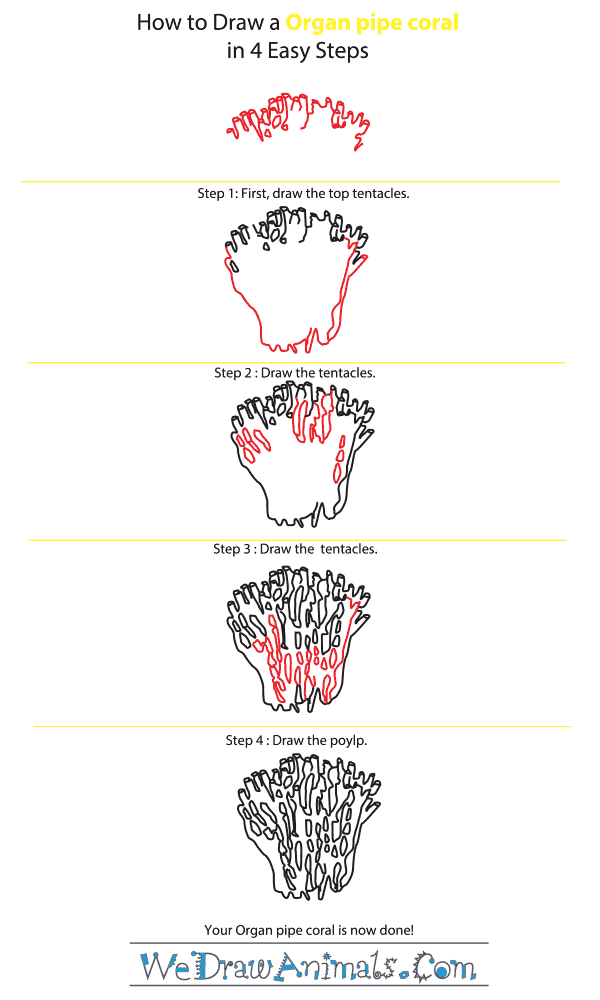In this quick tutorial you'll learn how to draw an Organ Pipe Coral in 4 easy steps - great for kids and novice artists.
The images above represent how your finished drawing is going to look and the steps involved.
Below are the individual steps - you can click on each one for a High Resolution printable PDF version.
At the bottom you can read some interesting facts about the Organ Pipe Coral.
Make sure you also check out any of the hundreds of drawing tutorials grouped by category.
How to Draw an Organ Pipe Coral - Step-by-Step Tutorial
Step 1: The first step to drawing the Organ pipe coral is to draw the top tentacles. Some Organ pipe coral look like they have small flowers on the top of the tentacles known as polyps.
Step 2: Next, draw the remaining area of the tentacles. It should be wider at the top and narrower at the bottom.
Step 3: Then, draw in the tentacle details. The tentacles of the Organ pipe coral have different levels with lines that connect the different tentacles.
Step 4: The last step is to draw the polyps on the remaining areas. The body of the Organ pipe coral is red but the polyps can be either green or gray.
Interesting Facts about the Organ Pipe Coral
The Organ pipe coral ( Tubipora musica) is found mainly in the Indian Ocean and the western part of the Pacific Ocean. It has a strong skeleton of calcium carbonate though it’s a soft coral creature. The hard skeleton is bright red in color due to which they are frequently used for jewelry & aquarium business. To maintain its optimum health it requires elements such as calcium, iodine & strontium. They feed on plankton & have close relations with various other soft coral and sea fans as well.
Did you know?
- The Organ pipe coral are the only recognized species of the genus Tubipora.
- Its skeleton consists of tube which are pipe like, there are number of polyps found on these tubes. Polyps have eight tentacles.
- These creatures possess a nonviolent nature.
- They get their nourishment from the algae (which rests inside their body) through photosynthesis.
- Climate change is a main threat to the existence of these corals.
- The normal age of developed individuals of this type is more than eight years.
Lesson plan note: Since corals have varying shapes, children can draw corals on a paper and paint the rest of the area around blue. They may also draw a few multi colored fish on the paper. You can then put all the corals together on the board to form hand-made coral reef!





